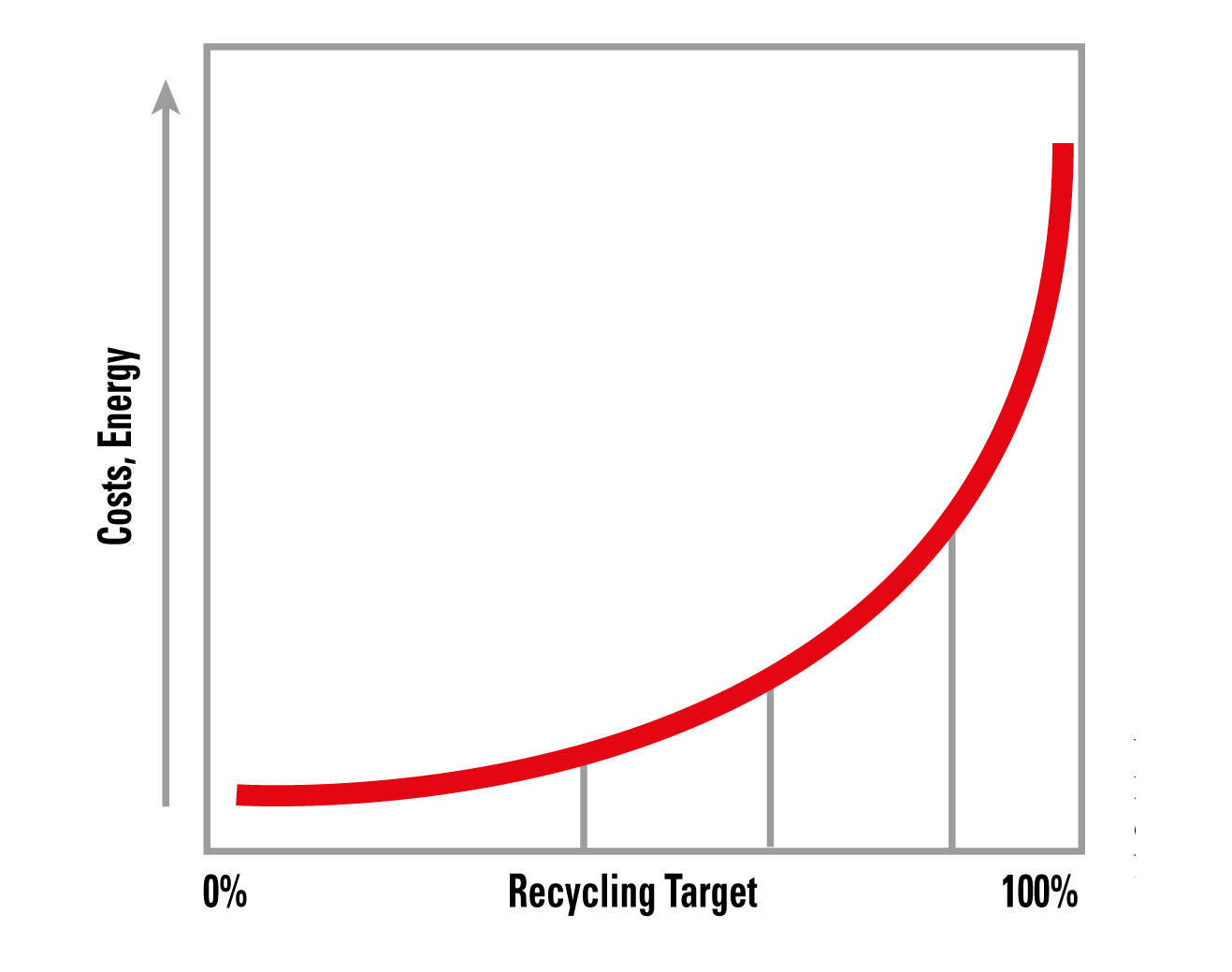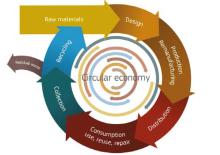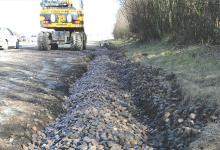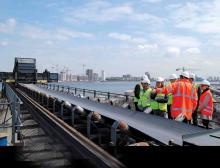
Resource Efficiency and Recycling are seen as the main buzzwords in the new Circular Economy Package. UEPG supports recycled aggregates as long as they are economic, environmentally and technically feasible.
But following the debate of some European and national decisionmakers, extraction of virgin raw materials could be deemed redundant if only the recycling rates were to be increased to 100% (closing the gap). This assumption ignores some key aspects such as the fact that the amount of recyclable and locally available construction and demolition waste, if recycled 100%, is not sufficient to substitute more than 20% of the total aggregates demand. It also ignores the fact that increasing already high recycling rates costs disproportionally more energy and other valuable resources, and thus makes it usually environmentally and economically unbeneficial.
In practice, neither the available amount of recycled aggregates nor the quality would allow for the complete substitution of natural aggregates.
Recycling and production of primary aggregates should be seen as complementary activities which would benefit mutually if one stops to oppose them.
The real potential and political priority should be in assisting those EU Member States with low recycling rates to better implement existing targets rather than defining new and higher ones.
While this is the tendency of the new Circular Economy Package, the political debate at stakeholder events still uses predominantly terms and references such as harsh reduction of resource use; resource productivity measured in GDP/resource use; resource taxation; ban on landfill, and restriction of backfilling. One key element of the debates is the definition of “backfilling.”
Backfilling is part of the 70% target of Construction and Demolition Waste recycling set by the Waste Framework Directive, showing its high-ranking in the waste hierarchy. The term has, however, no agreed definition. What is at stake is to ensure that extraction sites can still be backfilled, while allowing valorisation of suitable waste.
Another critical point is how to reach the 70% target. Some argue that market-based instruments would boost recycling rates.
Case studies demonstrate that high recycling rates can be achieved without a resource tax in place as it is the case in Germany.
There are other policy tools which might help increasing recycling rates in a sustainable way, for instance, more in-depth knowledge about waste streams. Addressing unfair competition, which includes illegal extraction, dumping of waste and the use of unsuitable and low quality products would help as these activities prevent reaching the 70% recycling target and therefore jeopardise the objectives of the Waste Framework Directive.
Finally, the material needs to be fit for purpose, and UEPG welcomes the initiative from the European Commission to develop, together with the industry, a protocol on the management of Construction and Demolition Waste. This is likely to be helpful as well as progress is often hindered through unnecessary permitting bureaucracy and unclear end-of-waste criteria.









